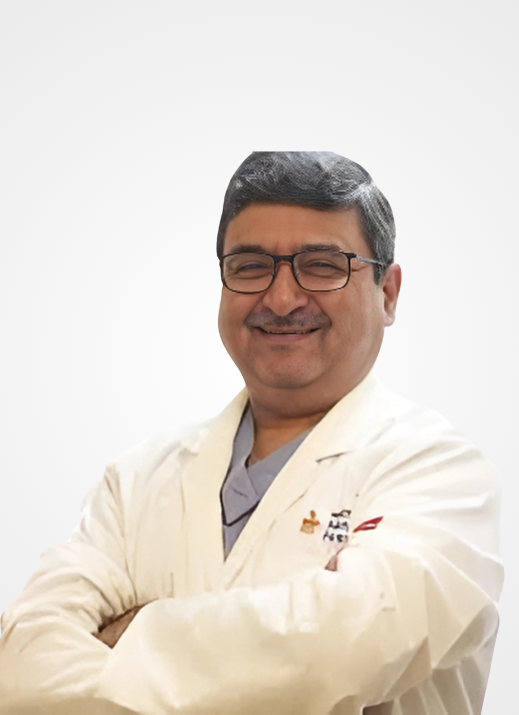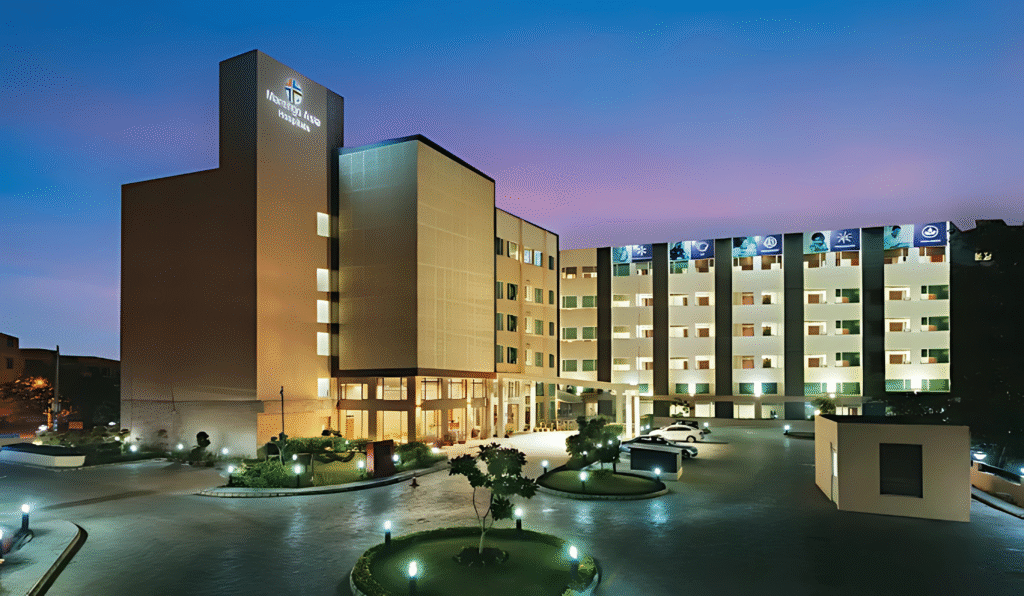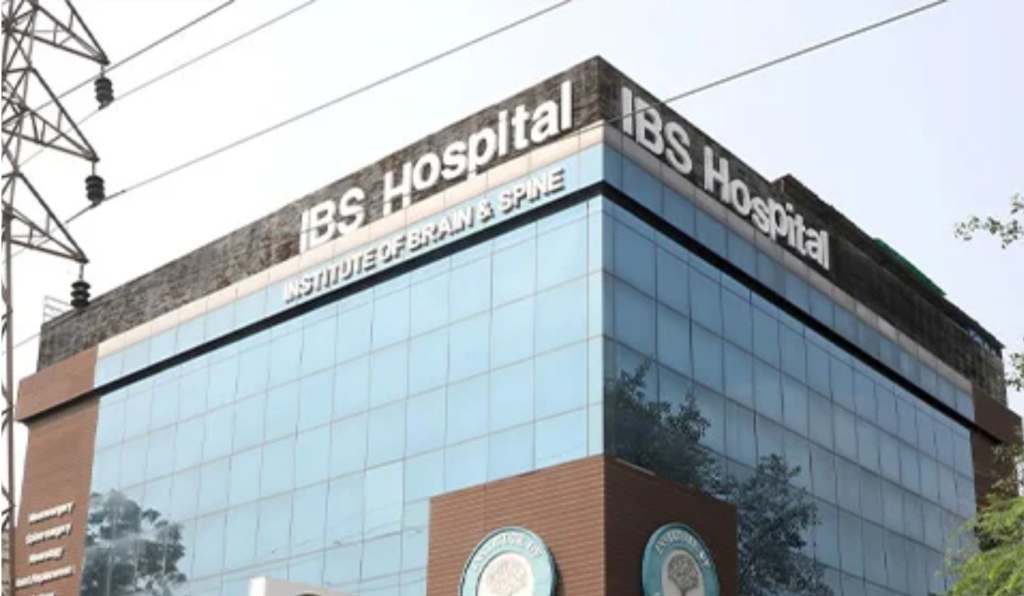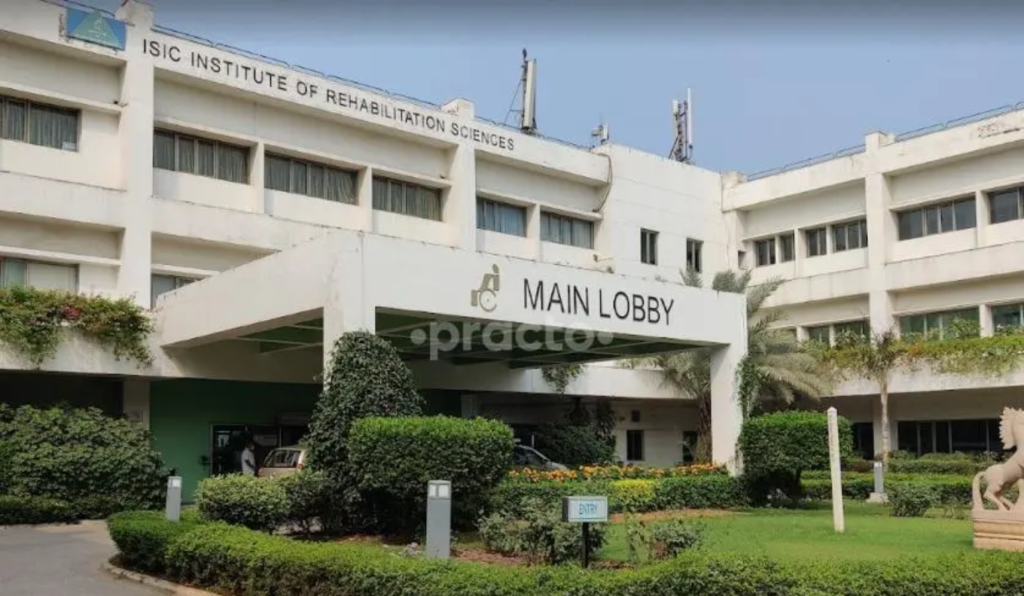Rheumatoid Arthritis Treatment Cost in India

What is Rheumatoid Arthritis?
Rheumatoid Arthritis (RA) is a chronic autoimmune disorder that causes the immune system to mistakenly attack the synovial lining of joints. This leads to inflammation, swelling, joint pain, and eventually joint deformity. Unlike osteoarthritis, RA typically affects joints symmetrically and can also impact other organs like the lungs, heart, and eyes.
Merged conditions like juvenile idiopathic arthritis (JIA)—a pediatric form of RA—and systemic lupus erythematosus-related arthritis may also present similar symptoms and require specialized rheumatologic management. If not managed properly, RA can lead to irreversible joint damage and disability.
How Does Rheumatoid Arthritis Develop?
Rheumatoid arthritis (RA) is an autoimmune disease where the immune system mistakenly attacks the synovium—the lining of the membranes surrounding the joints. This causes chronic inflammation that thickens the synovial membrane, eventually damaging cartilage and bone. The disease typically begins with minor symptoms such as morning stiffness or fatigue, which progressively intensify and affect multiple joints symmetrically.
As RA advances, it may lead to joint deformity, erosion of bone, and reduced function. The inflammatory process is systemic, potentially affecting other organs like the lungs, heart, and eyes. Genetic predisposition, infections, or hormonal changes can trigger its onset. Juvenile idiopathic arthritis, a related condition, follows a similar pattern in children. If untreated, the ongoing inflammation can cause permanent disability.
Causes and Risk Factors of Rheumatoid Arthritis
Rheumatoid Arthritis (RA) is a chronic autoimmune disorder that primarily affects the joints, but it can also impact other body systems. Unlike osteoarthritis, which is caused by wear and tear, RA occurs when the immune system mistakenly attacks the synovial lining of joints, leading to inflammation and joint damage.
Primary Causes of Rheumatoid Arthritis
- Autoimmune Response: The immune system targets healthy joint tissue, causing inflammation, pain, and swelling.
- Genetic Predisposition: Certain genes—such as HLA-DR4—are known to increase susceptibility to autoimmune conditions, including RA.
- Environmental Triggers: Exposure to viruses, bacteria, or other environmental factors may trigger RA in genetically predisposed individuals.
- Infections or Chronic Immune Stress: Some studies suggest a link between past infections and the activation of autoimmune pathways.
Risk Factors Contributing to Rheumatoid Arthritis
- Gender: Women are 2–3 times more likely to develop RA than men.
- Age: While RA can occur at any age, it commonly begins between the ages of 30 and 60.
- Family History: Having a relative with RA increases your risk of developing the disease.
- Smoking: Tobacco use is strongly associated with both the onset and severity of RA.
- Obesity: Excess weight may contribute to systemic inflammation, worsening the disease’s progression.
- Hormonal Imbalances: Changes in female hormones (e.g., during pregnancy or menopause) may influence RA development.
Early diagnosis and treatment are crucial in slowing joint damage, preserving mobility, and improving long-term outcomes in individuals with rheumatoid arthritis.
Symptoms of Rheumatoid Arthritis
Rheumatoid Arthritis (RA) is a chronic autoimmune disorder that primarily affects joints but may also involve other organs. Its symptoms tend to develop gradually and can flare up periodically, making early recognition essential for effective management.
Joint Pain and Stiffness
RA commonly targets smaller joints in the hands, wrists, and feet.
- Persistent joint pain, especially in the morning or after periods of inactivity.
- Stiffness that may last for hours, particularly after waking up.
- Reduced range of motion, making daily tasks difficult.
Swelling and Warmth in Joints
The inflammation triggered by RA leads to noticeable changes.
- Swollen, tender joints with visible puffiness.
- Warmth and redness around affected joints due to increased blood flow.
- Bilateral symptoms, meaning joints on both sides of the body are usually affected.
Fatigue and General Malaise
RA affects more than just joints—it can cause systemic symptoms.
- Chronic fatigue and a constant feeling of tiredness or low energy.
- Low-grade fever, especially during flare-ups.
- Loss of appetite or unintended weight loss in severe or advanced cases.
Types of Rheumatoid Arthritis
Rheumatoid Arthritis is a chronic autoimmune condition where the immune system mistakenly attacks the joints, leading to inflammation, pain, and long-term damage. It can also affect other organs and systems in the body. The different types of RA vary based on antibody presence, age of onset, and severity, which is vital in determining the right course of treatment.
This is the most common type of RA and occurs when blood tests show the presence of rheumatoid factor (RF) or anti-CCP antibodies. It typically leads to more severe joint damage and may affect other organs. Symptoms include painful, swollen joints, fatigue, and stiffness. It is more likely to cause symmetrical joint involvement and may progress faster without early intervention.
In this form, patients do not test positive for RF or anti-CCP antibodies, but still experience inflammation and symptoms similar to seropositive RA. It can sometimes be harder to diagnose and may be confused with other types of arthritis. Though usually less severe, joint damage can still occur if left untreated.
Affects children under the age of 16. It causes joint inflammation and stiffness that can last for more than six weeks. Some children may outgrow the condition, while others experience lifelong symptoms. It can also affect physical growth and the development of bones and joints during childhood.
Palindromic Rheumatism
Felty’s Syndrome
Rheumatoid Vasculitis
Which Type of Rheumatoid Arthritis is the Most Dangerous?
Seropositive Rheumatoid Arthritis is the most dangerous form of the condition. It is marked by the presence of rheumatoid factor (RF) or anti-CCP antibodies in the blood, which often leads to more severe joint inflammation and rapid progression. This type can also impact vital organs such as the heart, lungs, and eyes, increasing the risk of systemic complications and disability if not treated early.
Why Choose India for Orthopaedic Treatment?
India has emerged as a global hub for advanced orthopaedic care, attracting thousands of international patients each year. With a unique blend of medical excellence, cutting-edge technology, and cost-effective treatment, India offers unmatched advantages for those seeking relief from joint disorders, spinal conditions, fractures, nerve compression syndromes, and more. Whether it’s a complex surgical intervention or conservative therapy, patients receive world-class care tailored to their individual needs. Here’s why India stands out as a preferred destination for orthopaedic treatments.
India is home to some of the most experienced and internationally trained orthopaedic specialists. Many surgeons have trained in top global institutions and bring extensive expertise in managing complex cases—ranging from osteoarthritis and fractures to congenital and developmental bone disorders.
Indian hospitals offer state-of-the-art facilities equipped with cutting-edge imaging, robotic surgery, arthroscopy units, and minimally invasive surgical technologies. Dedicated orthopaedic departments ensure focused treatment for ailments like spinal disorders, ligament tears, and bone density issues.
India offers world-class orthopaedic care at a fraction of the cost compared to Western countries. Treatment plans—including surgery, rehabilitation, physiotherapy, and follow-ups—are bundled into affordable, transparent packages, making high-quality care accessible to international patients.
Unlike many countries where patients face long waiting periods for orthopaedic procedures, India ensures prompt consultations, diagnostics, and surgeries. This significantly reduces disease progression and enhances recovery outcomes.
India is a global leader in medical tourism, offering:
✔ Dedicated international patient coordinators
✔ Medical visa assistance for easy travel
✔ Affordable accommodation & travel support
✔ Multilingual staff, including English-speaking doctors
This ensures a smooth and hassle-free experience for foreign patients traveling to India for treatment.
Indian hospitals emphasize treatment and post-operative rehabilitation. Personalised physical therapy plans, nutritional counseling, and long-term follow-up care help restore mobility and improve overall quality of life after treatment.
Different types of Treatments for Rheumatoid Arthritis
Managing Rheumatoid Arthritis (RA) requires a multifaceted treatment strategy aimed at controlling symptoms, preventing joint damage, and improving quality of life. Since RA is an autoimmune condition, treatment goes beyond just pain relief—it involves suppressing the immune system’s abnormal response and preserving joint function. Depending on the severity of the disease and individual patient response, treatments can include medications, therapy, and immune-targeting drugs. Below are the primary treatment types used in the effective management of Rheumatoid Arthritis, including those beneficial for overlapping conditions such as Juvenile Rheumatoid Arthritis and Psoriatic Arthritis.
How It Works:
Biologics are advanced drugs that target specific components of the immune system involved in the inflammatory process. They are usually monoclonal antibodies or receptor blockers that inhibit substances like TNF-alpha or IL-6, which play a key role in joint damage and inflammation.
Specifically targets immune pathways
Blocks inflammation-causing proteins
Slows down joint degradation
When It’s Used:
Biologics are prescribed when conventional treatments, such as DMARDs, fail to control the disease effectively. They are commonly used in moderate to severe cases of Rheumatoid Arthritis.
When DMARDs are insufficient
For moderate to severe cases
In patients with systemic symptoms or rapid disease progression
Benefits:
Slows or stops joint damage progression
Reduces inflammation and stiffness
Improves long-term mobility and quality of life
How It Works:
DMARDs suppress the overactive immune response that leads to joint inflammation and damage. They work gradually to alter the course of the disease rather than just managing symptoms.
Slows immune system overactivity
Prevents joint and cartilage damage
Works systemically on inflammation
When It’s Used:
These drugs are typically the first line of treatment in Rheumatoid Arthritis and are introduced soon after diagnosis to prevent permanent joint damage.
Early-stage treatment
Long-term disease control
Used alongside other therapies for synergy
Benefits:
Prevents long-term disability
Reduces joint swelling and tenderness
Delays or avoids need for surgical intervention
How It Works:
Pain management includes NSAIDs, corticosteroids, and supportive therapies aimed at reducing pain perception and inflammation. These do not modify the disease but significantly improve comfort and function.
Reduces pain signaling
Alleviates muscle stiffness and swelling
Often used alongside disease-modifying drugs
When It’s Used:
Pain relief strategies are used throughout the disease course, especially during flares or when waiting for long-term medications to take effect.
For acute flare-ups
Before or during DMARD/biologic effect
In chronic cases for daily pain relief
Benefits:
Immediate symptom relief
Enhances quality of life
Supports physical therapy effectiveness
How It Works:
Occupational therapy helps patients with Rheumatoid Arthritis maintain independence and reduce joint strain through adaptive tools, joint protection techniques, and modified daily activities.
Teaches joint-protection strategies
Promotes ergonomic task management
Focuses on improving fine motor skills
When It’s Used:
Recommended for patients struggling with daily tasks due to joint stiffness, deformity, or weakness. Often used in moderate to severe stages of the disease.
When joint function affects daily life
During rehabilitation or flare-ups
For patients seeking non-drug support
Benefits:
Increases independence in daily life
Prevents further joint stress
Enhances mobility and confidence
How It Works:
Immunosuppressants reduce overall immune activity, lowering inflammation and preventing immune system attacks on the joints. These medications can include drugs like methotrexate, azathioprine, or cyclosporine.
Inhibits abnormal immune responses
Controls systemic inflammation
Works on multiple immune pathways
When It’s Used:
Used when biologics or traditional DMARDs are ineffective or in patients with extra-articular complications of Rheumatoid Arthritis.
In difficult-to-treat cases
When RA affects other organs
For patients intolerant to first-line options
Benefits:
Controls aggressive forms of RA
Reduces organ-related complications
Slows joint damage significantly
Different Procedures for Rheumatoid Arthritis
When medications and conservative therapies are no longer effective in managing rheumatoid arthritis (RA), surgical interventions can help preserve joint function, relieve pain, and enhance mobility. These procedures focus on removing damaged tissue, repairing structural damage, or replacing severely affected joints. India’s experienced rheumatology and orthopedic teams offer both traditional and minimally invasive surgical techniques tailored to each patient’s needs.
How It Works:
Synovectomy involves the surgical removal of the inflamed synovial membrane that lines the joint, which is often the source of pain and swelling in RA.
Reduces inflammation by removing diseased tissue
Often performed arthroscopically for less trauma
Prevents further joint erosion
When It’s Used:
Best for early to moderate RA in joints like knees, wrists, or elbows.
Active synovitis not responding to medications
Localized joint damage
Preserves joint before deformity sets in
Benefits:
Helps preserve joint mobility and delay more invasive surgery.
Reduces pain and swelling
Minimally invasive option available
Slows progression of joint damage
How It Works:
This procedure fuses two bones together to eliminate movement in a severely damaged joint, stabilizing and realigning the area.
Immobilizes painful joint
Eliminates abnormal motion
Uses pins, plates, or screws
When It’s Used:
Used in advanced stages of RA where joint replacement isn’t suitable.
Small joints like wrists or ankles
Severe deformity or instability
Failed previous surgeries
Benefits:
Provides durable pain relief in non-weight-bearing joints.
Reduces chronic pain
Improves stability and function
Low risk of implant-related complications
How It Works:
Tendon repair surgery reconstructs or repositions tendons that have been damaged or ruptured due to long-standing inflammation and joint deformities.
Restores normal movement patterns
Reattaches or transfers tendons
Often combined with other surgeries
When It’s Used:
For patients with tendon rupture or impaired mobility.
Hand or foot tendon deformities
Loss of grip strength or extension
Chronic RA with functional limitation
Benefits:
Improves hand and foot function, especially in daily activities.
Restores movement and dexterity
Prevents joint stiffness
Enhances quality of life
How It Works:
Damaged parts of the joint are replaced with artificial components to restore function and relieve pain.
Involves prosthetic implants
Common for hips, knees, shoulders
May include partial or total replacement
When It’s Used:
For patients with severe joint damage and loss of function.
End-stage RA unresponsive to therapy
Severe joint deformity
Multiple joint involvement
Benefits:
Restores mobility and significantly reduces joint pain.
Improves daily functioning
Long-term relief
Customizable to patient anatomy
How It Works:
Arthroscopy is a keyhole surgical procedure using a camera and instruments to diagnose and treat joint damage with minimal tissue disruption.
Requires small incisions
Visualizes and treats inflammation
Removes loose cartilage or bone
When It’s Used:
Ideal for early to mid-stage RA with limited joint damage.
Pain and stiffness in knees, wrists
Synovial inflammation or cartilage tears
As a diagnostic and therapeutic tool
Benefits:
Offers quicker recovery with less postoperative discomfort.
Reduced surgical trauma
Faster rehabilitation
Can delay more invasive procedures
Other Advanced Procedures and Costs
In addition to standard surgical options, several advanced procedures are available for individuals with severe or treatment-resistant Rheumatoid Arthritis (RA). These interventions are designed to minimize joint destruction, restore function, and improve mobility in complex cases. Many of these procedures are especially beneficial when joints are severely damaged, or when conventional therapies no longer provide sufficient relief. These advanced techniques are also relevant for patients with related disorders like Juvenile Rheumatoid Arthritis or Psoriatic Arthritis.
Joint resurfacing is a bone-preserving procedure where only the damaged surface of the joint is replaced rather than the entire joint. It’s ideal for younger or active patients with localized damage.
How it Works: Damaged cartilage and bone are smoothed and capped with metal or ceramic surfaces.
When It’s Used: When the joint is damaged but bone stock is still good, especially in hips or shoulders.
Benefits:
Preserves more natural bone
Faster recovery than full joint replacement
Better range of motion
This minimally invasive technique uses heat generated by radiofrequency waves to interrupt nerve signaling in inflamed joints.
How it Works: A needle probe is guided into the target area under imaging; heat ablates the nerve fibers responsible for pain.
When It’s Used: In chronic joint pain not responsive to medications or injections.
Benefits:
Minimally invasive and outpatient-based
Significant pain relief
Avoids systemic drug side effects
This regenerative therapy involves harvesting and growing the patient’s cartilage cells to repair focal cartilage damage.
How it Works: Cartilage cells are extracted arthroscopically, cultured in a lab, and re-implanted into the joint.
When It’s Used: In younger patients with isolated cartilage defects.
Benefits:
Natural tissue repair
Delays need for joint replacement
Restores joint function and reduces pain
Best Doctors for Prostate Cancer Treatment in India
Best Hospitals for Prostate Cancer Treatment in India
Med Travel India Offerings
How does Med Travel India help you?
Med Travel India is dedicated to assisting international patients in accessing high-quality Orthopaedic treatment in India. We ensure a seamless medical journey from selecting the best hospitals to providing logistical support. Our team works closely with top doctors and healthcare facilities to offer personalised treatment plans tailored to each patient’s condition.
We take care of every aspect of medical travel, allowing patients to focus solely on their recovery. Below is a list of services provided by our company:
Services offered by Med Travel India

Seamless Planning for Your Medical Journey
Before you even arrive, we take care of all the groundwork. From connecting you with top specialists to ensuring all necessary medical evaluations are completed, we make your journey stress-free. Our goal is to provide clarity and comfort before your treatment begins.
- Free Medical Consultation
- Personalized Treatment Plan
- Estimated Cost & Duration
- Visa Assistanc
- Second Opinion Service
- Pre-Arrival Coordination
Worry-Free Travel & Comfortable Stay
We ensure that your journey to India is as smooth as possible. From booking your flights to arranging a comfortable stay near your hospital, we handle everything so you can focus on your health.
- Flight Booking Assistance
- Accommodation Booking
- Airport Pickup & Drop
- Language Interpretation Services
- Local Transport Arrangements
- Currency Exchange Support


World-Class Medical Care, Personalized for You
We ensure that your medical treatment is well-organized and efficient. Our team works closely with hospitals to facilitate smooth admissions, consultations, and procedures, ensuring you receive top-quality healthcare.
- Priority Appointment Scheduling
- Direct Hospital Admission
- Specialist Doctor Assignment
- Pharmacy & Medical Supplies
- Hospital Admission & Discharge Support
- 24/7 Customer Assistance
Continued Support for a Speedy Recovery
Your health journey doesn’t end after treatment. We provide post-procedure assistance to ensure a smooth recovery, whether you stay in India for rehabilitation or return home.
- Post-Surgical Care Coordination
- Rehabilitation & Physiotherapy
- Virtual Doctor Consultations
- Diet & Lifestyle Guidance
- Extended Stay Arrangements
- Post-treatment Medical Supplies


Beyond Healthcare, A Comfortable Experience
We offer additional services to make your stay in India comfortable and enriching, ensuring that your well-being is cared for beyond the hospital.
- Medical Insurance Settlement Help
- SIm Card Assistance
- Customized Sightseeing Tours
- Medical Document Assistance
- Personalized Assistance for Family Members
- Concierge Services
Reviews From Our Patient













































